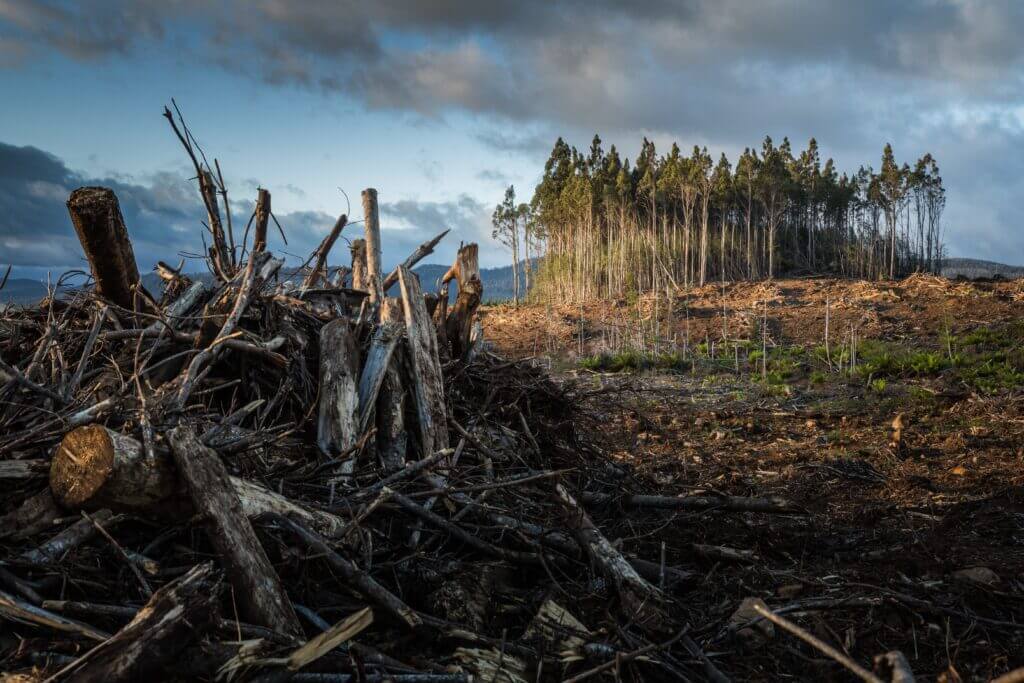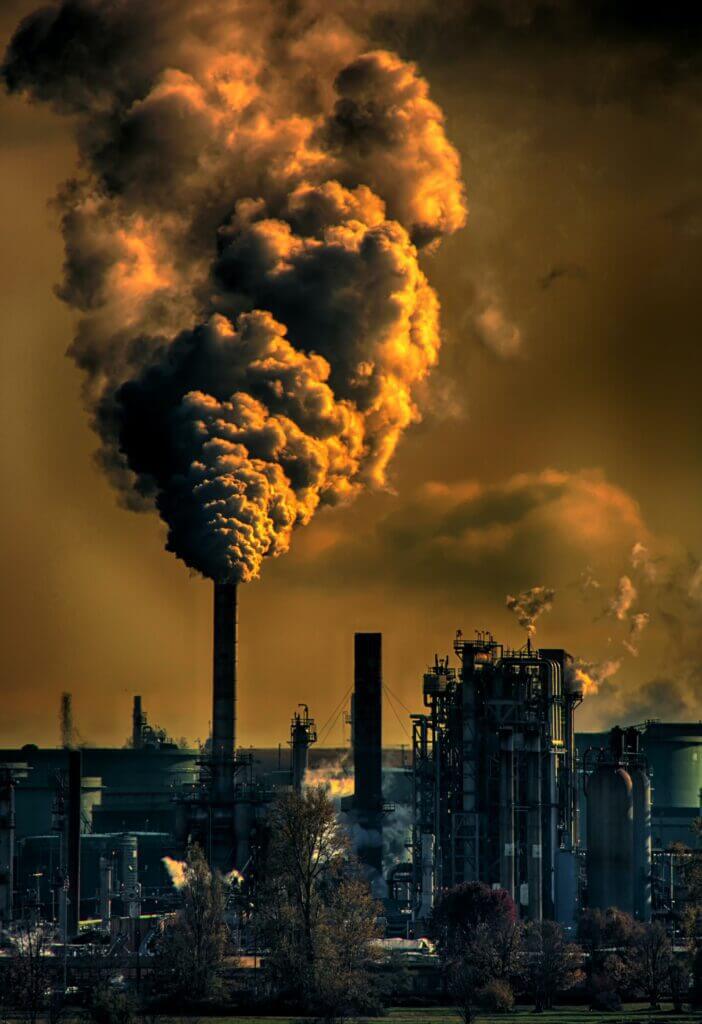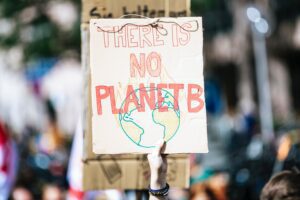What is Climate Change simple definition?
Climate change is a shift in average weather patterns and temperatures over time. Natural causes include fluctuations in the sun’s energy output. However, since the 19th century, the main cause of climate change has been human activities, specifically the burning of fossil fuels such as coal, oil, and gas.
Fossil fuel burning releases greenhouse gases which trap heat from the sun, causing global temperature rise.
Examples of greenhouse gases contributing to climate change are carbon dioxide and methane (released from activities such as driving a car with gasoline or heating a building with coal).
Deforestation and land clearing also contribute to carbon dioxide emissions, while landfills are a significant source of methane emissions. Major contributors to greenhouse gas emissions include energy, transportation, industry, buildings, agriculture, and land usage.

Indicators of Climate Change
What actions by humans are causing changes in the climate?
Before the Industrial Revolution, which started in the mid-19th century, temperatures across the world were consistently around 14°C for 11,000 years. The Industrial Revolution (the mid-1800s) marked the start of the widespread use of fossil fuels like coal, oil, and gas as energy sources.
Fossil fuel combustion generates energy. It also releases greenhouse gases such as carbon dioxide, methane, and nitrous oxide into the atmosphere. Over a period of time, a significant amount of these gases has accumulated in the atmosphere.
For instance, the concentration of carbon dioxide in the atmosphere increased by 40% during the 20th and 21st centuries and is now above 400ppm (parts per million). In the year 2019, the level of carbon dioxide in the atmosphere was higher than it has been in over two million years.

Greenhouse gases like carbon dioxide, once released into the atmosphere, create a cover around the planet. This cover holds in the heat from the sun and results in global warming.
We observed this phenomenon as early as the 1980s. To provide information to governments to address climate change, the Intergovernmental Panel on Climate Change (IPCC) was established in 1988.
Research has shown that the elevated levels of greenhouse gases in the atmosphere are the primary reason for the rising global temperatures.
Researchers have eliminated natural events like volcanic activity, changes in the sun’s energy output, or natural sources of CO2 as causes of climate change. However, these factors may have a slight impact on top of human-caused emissions.
The IPCC’s latest report states that human actions are the sole cause of climate change without any doubt.
The concentration of Greenhouse gas has been at its highest for a very, very long time
Moreover, emissions continue to increase. Hence, the planet is now approximately 1.1°C warmer than it was in the late 19th century. The period from 2011 to 2020 was recorded as the hottest decade.
Many people believe that climate change only refers to rising temperatures. However, this is just the tip of the iceberg. As the Earth is a complex system with interconnected elements, alterations in one area can cause widespread effects.
The impacts of climate change now encompass a range of issues. They include phenomena such as severe droughts, water shortages, rampant fires, rising sea levels, floods, melting polar ice caps, melting permafrost, devastating storms, and a decrease in biodiversity.
What is the speed of temperature increase?
Since the beginning of the Industrial Revolution, the average temperature of the earth has increased by approximately 1°C. This is a swift change in the context of the planet’s climate system, as natural global shifts have typically occurred over much longer periods. It should also be noted that not all regions are experiencing the same level of warming, with some areas experiencing an increase greater than 1°C.
What causes Climate Change?
What is the greenhouse effect?
The accumulation of greenhouse gases like carbon dioxide in the atmosphere creates a shield around the Earth.
Greenhouse gases like carbon dioxide form a cover around the Earth. It allows the sun’s short-wave radiation to pass through and reach the planet’s surface. The Earth absorbs this light and energy. It then emits long-wave infrared radiation, which is intercepted by the greenhouse gas blanket. Some of it gets absorbed and returns back to Earth, trapping heat and causing the planet to warm, a process referred to as the greenhouse effect.
It’s important to recognize that the greenhouse effect is vital for life on the planet. Without it, temperatures would be extremely low, and human survival would be impossible. But, by emitting additional greenhouse gases into the atmosphere, humans have intensified the greenhouse effect.
The thickness of the greenhouse gas blanket has increased. It led to it absorbing more infrared radiation and contributing to a stronger greenhouse effect. Rather than maintaining a stable temperature, this enhancement is causing the Earth to experience rising temperatures.
Where do greenhouse gases come from?
One quarter of the greenhouse gases emitted by human activities come from the combustion of fossil fuels for electricity and heating purposes.
Approximately 25% of human-generated greenhouse gas emissions are attributed to Agriculture, Forestry, and Other Land Use practices.
Deforestation, which is carried out to make room for agricultural land and livestock, is another contributor to the increase in atmospheric carbon dioxide. This is because forests play a crucial role in absorbing and removing carbon dioxide from the atmosphere, so removing them leads to a rise in atmospheric carbon dioxide.
Livestock rearing, such as cows for meat and milk, is another use of land that contributes to greenhouse gas emissions. These animals release methane. In addition, the need to feed them often results in the clearance of additional land, leading to even more emissions.

Other sources of carbon dioxide emissions are aeroplanes and the manufacture of cement.
Impacts of climate change
General aspects
Human activity, including the emission of greenhouse gases and aerosols and changes in land use, is the primary cause of climate change and its impacts on the climate system, ecosystems, and human populations.
Climate change impacts are evident in a number of areas, including alterations to the climate system:
- Increasing sea levels. Global warming is causing glaciers and ice sheets to melt. The processus adds more water to the oceans, causing the sea level to rise. The oceans absorb the majority (90%) of excess heat from climate change, and as a result, warmer water is expanding and occupying more space.
- Oceanic acidification. When the ocean absorbs carbon dioxide, it becomes more acidic, a phenomenon referred to as ocean acidification, also known as the “twin evil” of climate change.
- Frequent and severe weather events. Climate change is leading to an increase in the intensity and frequency of extreme weather events such as heatwaves, droughts, and floods.
Climate change has an impact on human lives and the environment. Some examples include:
- Flooding in coastal areas. Coastal cities are in danger of flooding as sea levels continue to rise.
- Food scarcity. High temperatures, extreme weather conditions, flooding and droughts can harm agricultural lands making it challenging for farmers to grow crops, leading to uncertainty in their yearly crop yields.
- Conflict and migration. Climate change can intensify existing problems like shortage of food or shelter and make them worse, resulting in disputes over resources or migration.
- Impact on marine life. Rising ocean temperatures, ocean acidification and low oxygen levels in the ocean harm marine organisms such as fish and coral reefs.
Climate Change impacts individuals in different ways
Climate Change impacts people in various ways, including health, food production, housing, safety, and employment. Some populations, such as those in small island nations and developing countries, are already more vulnerable to the impacts of climate change. When the sea level rises, it forces whole communities to relocate. More frequent droughts, in parallel, increase the risk of famine. As a result, the number of “climate refugees” is expected to rise in the future.
Every rise in global temperatures has a significant impact.
As per a number of reports by the United Nations, scientists and government reviewers have concurred that restricting global temperature rise to no more than 1.5°C would reduce the severity of climate impacts and maintain a livable environment.
Nevertheless, the current policies predict a temperature rise of 2.8°C by the end of the century. Although emissions causing climate change come from all over the world and affect everyone, some countries emit much more than others.
The 100 countries that emit the least contribute only 3% of total emissions. In opposition, the ten largest emitting countries contribute 68%. Despite this, everyone must take action against climate change, but those who are responsible for creating a greater share of the problem have a greater obligation to act first.
The challenge we face is significant, but there are some solutions already
Key considerations
The solutions to combat climate change can bring economic gains and enhance our quality of life while preserving the environment. There are international frameworks and pacts that provide direction for progress. The Sustainable Development Goals, the UN Framework Convention on Climate Change, and the Paris Agreement are among them. The three main areas of action are reducing emissions, preparing for the effects of climate change, and financing the necessary changes.
To reduce emissions contributing to climate change, it is important to transition away from fossil fuels and towards renewable sources such as wind or solar. We need immediate action; time is of the essence. Several countries have already pledged to achieve net zero emissions by 2050. However, substantial reductions must be made by 2030 in order to limit global warming to 1.5°C. It is necessary to decrease the production of fossil fuels by approximately 6% annually between 2020 and 2030.
Preparing for the effects of climate change is essential for safeguarding individuals, homes, businesses, jobs, infrastructure and ecosystems. This involves addressing both present and future impacts. Adaptation efforts are needed all over the world, but the priority should be given to those who are the most vulnerable and have limited resources to handle the climate risks. The investment in adaptation can yield high returns. For example, disaster early warning systems can save lives and assets, and the benefits can be up to ten times the initial investment.
The Paris Agreement and global temperature goals
In 2015, nearly all nations of the world made a commitment to reduce their greenhouse gas emissions through signing a global agreement. The objective was to keep the average global temperature from rising more than 2°C above pre-industrial levels, with an ideal target of limiting it to 1.5°C.
Since the signing of the document promising to reduce greenhouse gas emissions, the IPCC published a report. The report outlines the differences in impacts between a temperature rise of 1.5°C and 2°C. The study highlights numerous benefits for people globally if temperatures are kept at the lower limit of 1.5°C, but significant and swift cuts in global greenhouse gas emissions are necessary to achieve this target.
If we want to prevent significant rises in global temperature, we need to reduce the amount of greenhouse gases we produce and transition to using renewable energy sources. Additionally, we must manage land resources more efficiently and might have to resort to techniques that remove CO2 from the atmosphere.
If the current rate of burning fossil fuels and deforestation continues, the planet could experience a warming of over 4°C by the year 2100. This level of warming could have a profound impact on life on earth and result in significant consequences.
We have the option of incurring costs now or facing much greater expenses in the future
Taking steps to address climate change requires significant financial commitments from both governments and businesses. However, failing to take action will ultimately cost much more.
It is important for industrialized nations to follow through on their promise to provide annual funding of $100 billion to developing countries to support their transition to more environmentally sustainable economies and help them adapt to the impacts of climate change.

